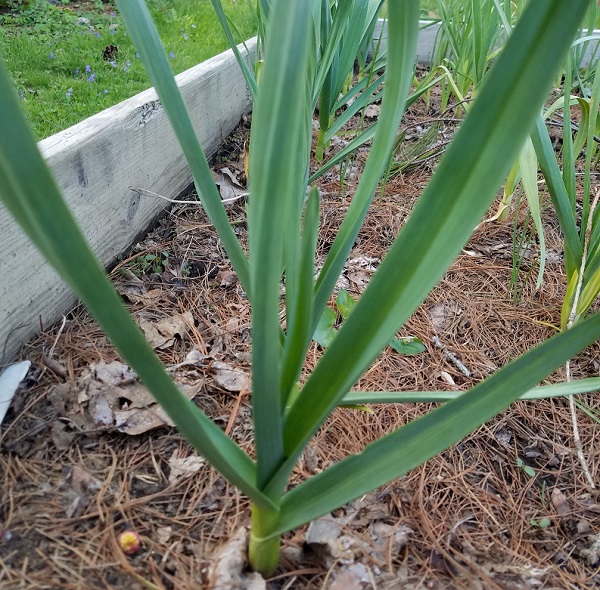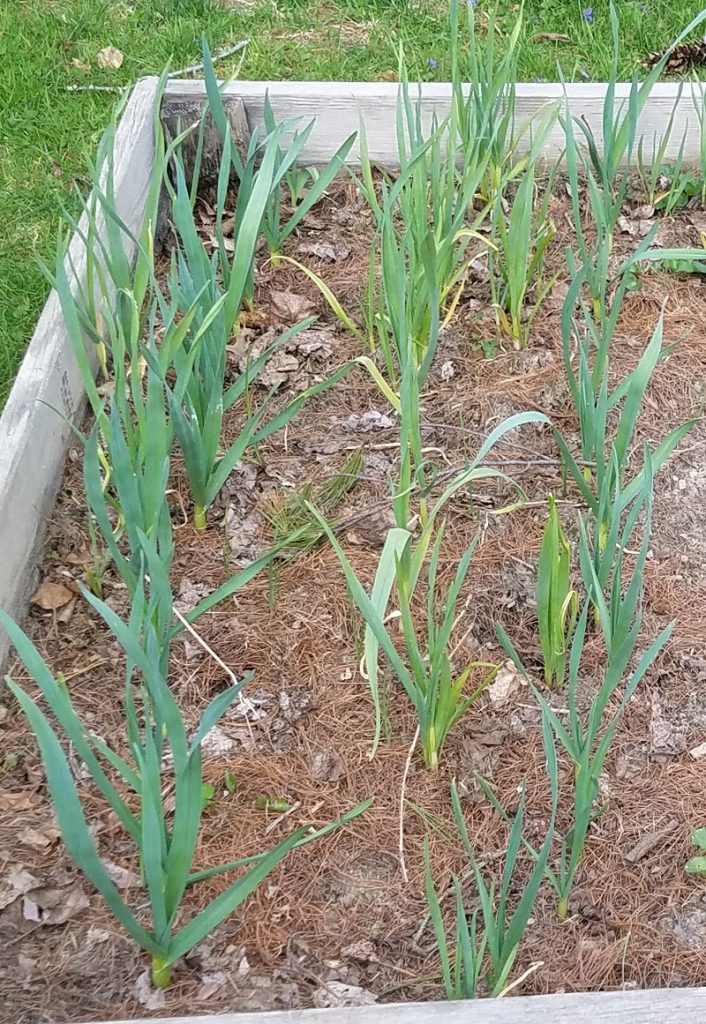Garlic Gardening Made Simple

Garlic is often thought of as an herb but botanically it’s a vegetable. Few people think about garlic gardening, sticking instead with the normal garden vegetables like tomatoes and peppers, but it’s an easy-to-grow vegetable that pairs well with many other foods.
Even in the garden garlic pairs wells as a companion plant that provides pest protection and enhances vegetable flavor. Tomatoes, potatoes, carrots, broccoli, and cabbage benefit from having garlic planted near them in the garden and will benefit the second time when paired with fresh garlic in a recipe.
Use these tips to successfully grow garlic in your home garden.
Native Garlic
Garlic, (Allium sativum) is native to Asia but grows as a wild plant in Italy and parts of France. It’s a perennial plant that has an edible bulb with a distinct aroma and flavor. Garlic is a flavor-filled vegetable that has found its way into recipes all across the world and is closely related to the onion and leek.
Everyone knows that eating garlic will leave behind a lingering odor in the mouth but eating it also provides health benefits. Compounds in garlic are said to reduce blood pressure, lower bad cholesterol, stabilize blood sugar, reduce bronchitis symptoms, and provide several other health benefits.
Enhance the flavor of your food while improving your health by adding a little garlic to your meals.
Types Of Garlic
* Soft-necked garlic is the most common type and is typically sold in all supermarkets. The soft-necked type is divided into two categories – artichoke and silverskin.
* Artichoke garlic has multiple layers, like an artichoke, that overlap and will contain 15-20 cloves. This type has a thick, white outer layer and will remain fresh for up to 8-months when stored properly.
Applegate, Polish Red, Early Red Italian, Italian Late, and Galiano are a few of the artichoke garlic varieties.
* Silverskin garlic is the easiest to grow in a home garden and is an abundant-producing variety. Polish White, Chet’s Italian Red, and Kettle River Giant are the most common types of silverskins.
* Hard-necked garlic has large cloves with intense flavor and is easy to peel. The most common types of hard-necked garlic include Chesnok Red, German White, Purple Stripe, Persian Star, and Porcelain.
Because garlic is grown worldwide and each region has developed its’ own strain of garlic, there is not a ‘true’ garlic that will look and taste the same everywhere in the world. While garlic gardening, experiment with different garlic types in the garden so you can discover which ones grow best in your climate and which ones have the flavor you prefer.
When To Plant Garlic
Garlic cloves are planted in the middle of fall (autumn) when all other garden plants have finished their growing season. Garlic is ‘put to bed’ for the winter because it needs a season of cold temperatures, “stratification” to grow.
Before the soil freezes but after it has cooled down significantly, is the ideal time to plant garlic. The cloves will need 3-6 weeks before the soil freezes to develop a root system.
Sun and Soil Requirements
Garlic prefers a spot in the sun so select a growing location that will be in full sun. There are no leaves in late autumn on most of the trees to block the sun but bear in mind the sun’s patterns changes during the winter and a sunny summer location might now be in full sun during the winter.
Well-draining soil that is fertile and crumbly is best for garlic gardening. Incorporating plenty of compost into the soil before planting will provide nutrients to the garlic, promote good drainage, and help keep the soil from compacting during the winter.
How To Plant Garlic

Each garlic plant is comprised of multiple cloves. You want to plant individual cloves so gently break apart the garlic bulb into separate cloves and place the root-side of each clove facing down in the planting row, when they grow, they will form new bulbs. Plant the cloves in mid-fall when the soil is still slightly warm. Create rows that are 12-inches apart and 2-inches deep. Space the cloves 6-inches apart.
Place 1-inch of soil on top of the cloves followed by 1-inch of mulch. Water thoroughly.
Leave the garlic alone during the winter and as soon as the soil warms up in spring the cloves will begin to grow green tops that resemble the top of an onion.
Now a garlic gardening tip, as the garlic grows, it will send out stalks that will have flower heads. These are called scapes. Let these grow for a bit. They can become quite beautiful. Often times these flower stalks wrap around. As they begin wrapping, cut the scapes off. If you leave them on the energy will go to the flower – you want all energy at this point directed at growing the bulbs. The scapes are quite edible.
Harvesting Garlic
When the lower leaves of the green stalk begin to turn brown the garlic bulb is ready to harvest.
To test for ripeness, dig up just one bulb to see if it has filled out its’ skin. Bulbs harvested when the skin appears to be baggy will result in smaller garlic bulbs and a milder flavor.
Use a shovel to dig down 4-inches behind the stalk, then lift up on the shovel to remove soil and bulb together. Do not pull up by the stalk. Gently brush the soil from the garlic bulb but do not wash before storing.
Storing Garlic
Lay freshly harvested garlic on a table in a single layer in a dry, dark location that has plenty of air circulation for 7-days. This will allow the skin to dry and begin to toughen. After the initial 7-days, the bulbs will need to be stored long-term in a cool, dry, dark location that has plenty of air circulation.
Light and moisture will promote the development of mold on the harvested bulbs. Keep them in the dark, keep them dry, and keep the air circulating around them.
Pests and Diseases
Pests
Bulb mites, leafminers, thrips, onion maggots, and nematodes are pests that enjoy eating garlic bulbs. Create a tea of 1-teaspoon of crushed red pepper flakes and 1-cup of hot water. After the water cools, pour it onto the soil around the garlic to repel most of the pests that attack the bulbs.
Diseases
The plants are susceptible to several diseases, including White Rot, Basal Rot, Rust, Penicillian Decay, and Downy Mildew. Certain disease can be treated and stopped by removing the affected leaves, however, more serious diseases like White Rot will require the garlic plant to be removed from the soil and burned. The soil will need to be removed to prevent the spread of the diseases also.